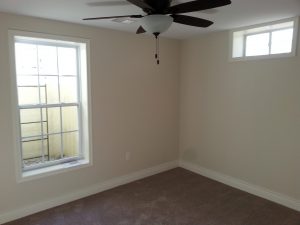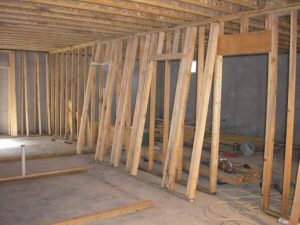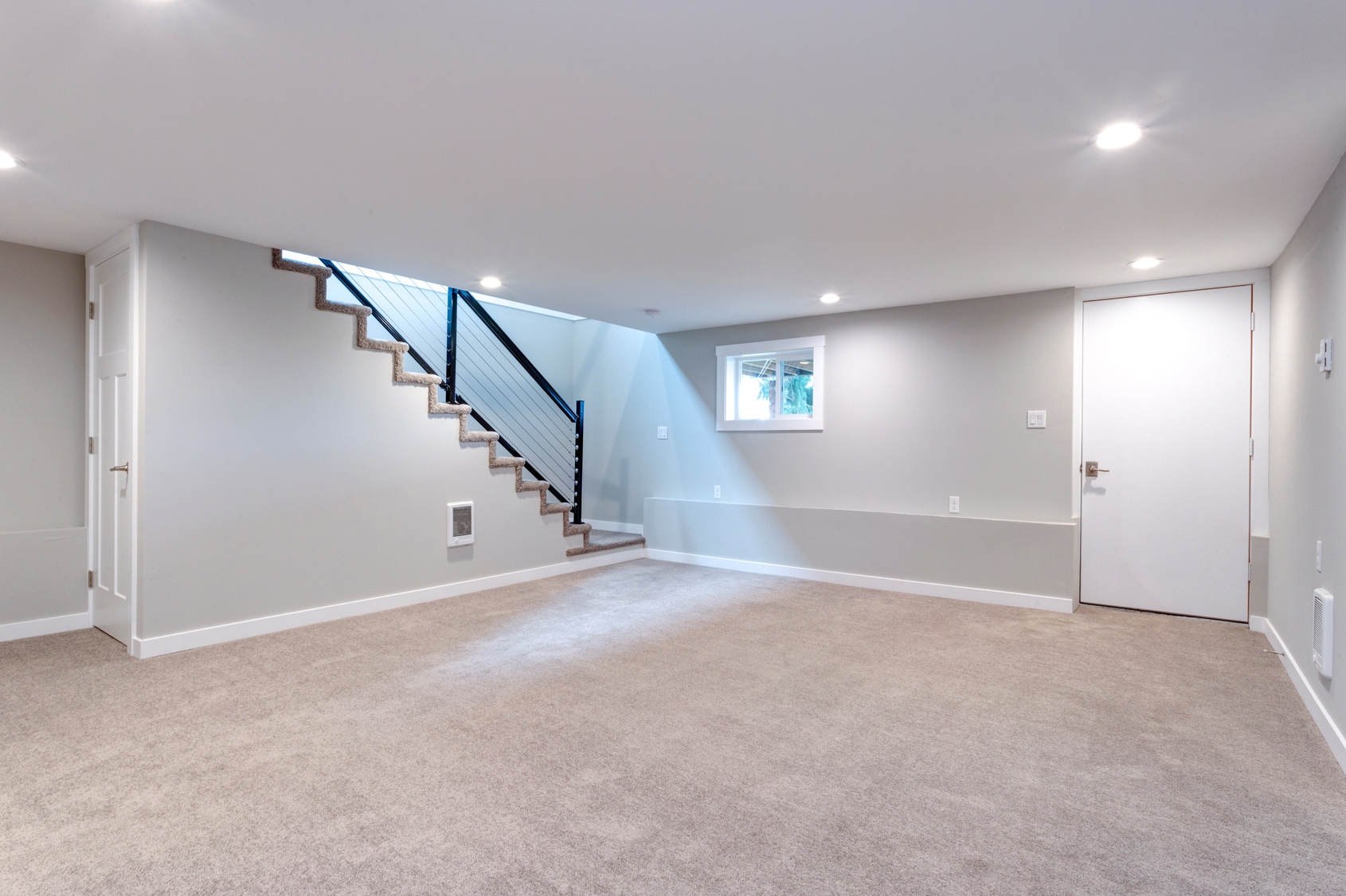Homes that have extra, unused basement space have a readymade renovation project just waiting to be started. Finishing a basement to create an extra room can raise a home’s value and provide a place for renters, relatives and friends who don’t mind living in basement spaces. But finishing a basement requires careful planning and the right improvement choices. Don’t rush in. Check out these tips for the ideal livable basement space.
Measure Everything
Know how much space you are working with. This is particularly important regarding height: Many local regulations on turning a basement into a livable area require that the basement be at least 7 feet tall, sometimes higher. Always consult local building codes.
Inspect Plumbing and Wiring
You will probably need to add plumbing and wiring to your basement, including a separate bathroom. Check on existing systems to see what expansions and upgrades need to be done. Remember, you’ll need a permit for this work.
Add Insulation for Warmth and Sound
You will need to insulate the ground and walls of the basement to both protect against noise and low temperatures, using insulated panels, batting, and other common materials. This could involve important wall renovation choices, so consider all your options.
Add Moisture Protection
Living in basement conditions requires vapor barriers to prevent moisture from spreading beyond the concrete walls, so consider that as you ponder basement living room ideas.
Install Proper Egress Windows
One of the most important parts of those basement building codes we mentioned are egress windows, basement windows that both let in light and allow people to escape in case of an emergency. A live-in basement requires these windows, so be prepared to expand existing windows and renovate your foundation to make room for them.

Include Proper Ventilation
Ventilation is important for air flow. Not only does this help keep the basement fresh, but it also ensures that any fumes from heaters, cooking, etc. are safely funneled away.
Check for Radon
Radon is a type of ground-based radiation. Its presence depends on local geography, and if radon is an issue in your area you may want to get a radon test kit and check levels in your basement.
Check for Pests and Rot
Check wood, stone and concrete for any signs of pests or moisture damage. Pest access must be blocked, and rotted materials replaced before you begin your basement remodel.
Install Durable Walls
Instead of drywall, use more durable materials with great resistance to moisture and extra insulation, such as wall panels and foam boards that can be easily installed in basement spaces. You will probably need to add framing for both insulation and your walls.
Inspect and Upgrade Flooring
If people will be living in basement spaces, they probably don’t want to walk on bare concrete. Wood flooring often doesn’t work in basements because of moisture and warping, but engineered wood, tiles, and properly installed carpet are viable options.
Install a Sump Pump
A sump pump is a necessary installation in wetter areas where groundwater can threaten basements. Now that your basement is becoming more valuable, you need to protect it the right way, which could require a sump pump as part of the renovation.
Protect the Outside Foundation
Don’t let moisture or standing water attack the outer foundation, either. Install gravel beds, sloping soil beds, rain diverters, and other important defenses against foundation damage around your house.
Choose the Right Kind of Lighting
Include as much natural light as possible in the basement living space by enlarging windows, if possible, when considering basement living room ideas. When picking out artificial lighting, go for warm lights that cover a lot of space to remove any of that leftover basement gloom. With enough ceiling fixtures and lamps, you should be able to create a cozy atmosphere.

Plan a Ceiling with Room
If you want a proper ceiling in the basement, you probably need to install a drop ceiling. These paneled ceilings come in many styles, so look for a residential option that doesn’t invoke the feeling of a commercial setting.
Place Outlets and Connections Thoughtfully
Whoever is living in your basement will probably have a computer, phone charger and a variety of electronic devices. Additionally, you may want to set up a TV or other type of entertainment system. Carefully think about where to put in outlets and make them plentiful!
Build a Walkout, if You Have Room
A “walkout” is an independent exit from the basement into the outdoors. This works well for houses that are built on hills or have basements that can otherwise access enough outside space for a door and walkway. It’s a great way to make the basement more independent and renter- or guest-friendly.
Once you have covered the basics, all that’s left to do is let your imagination run wild with how you actually want to use the space. Good luck!
